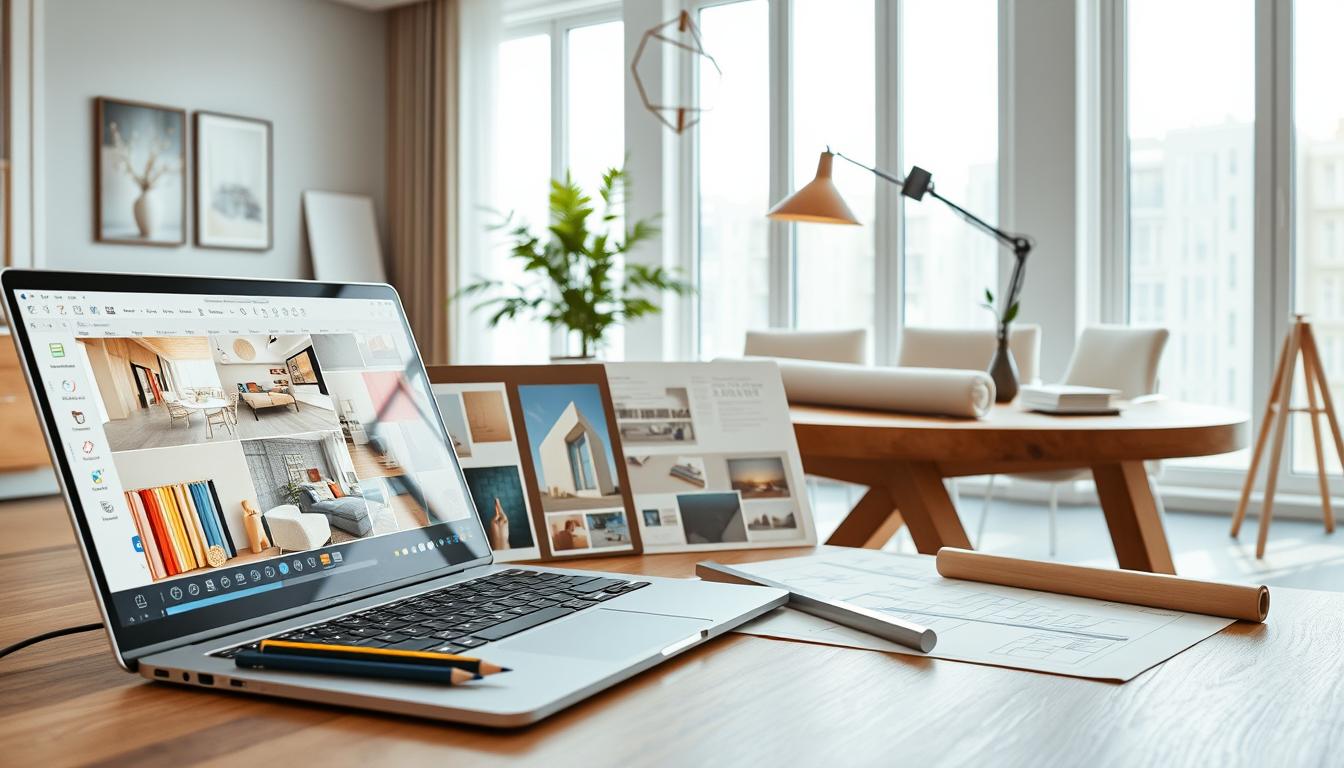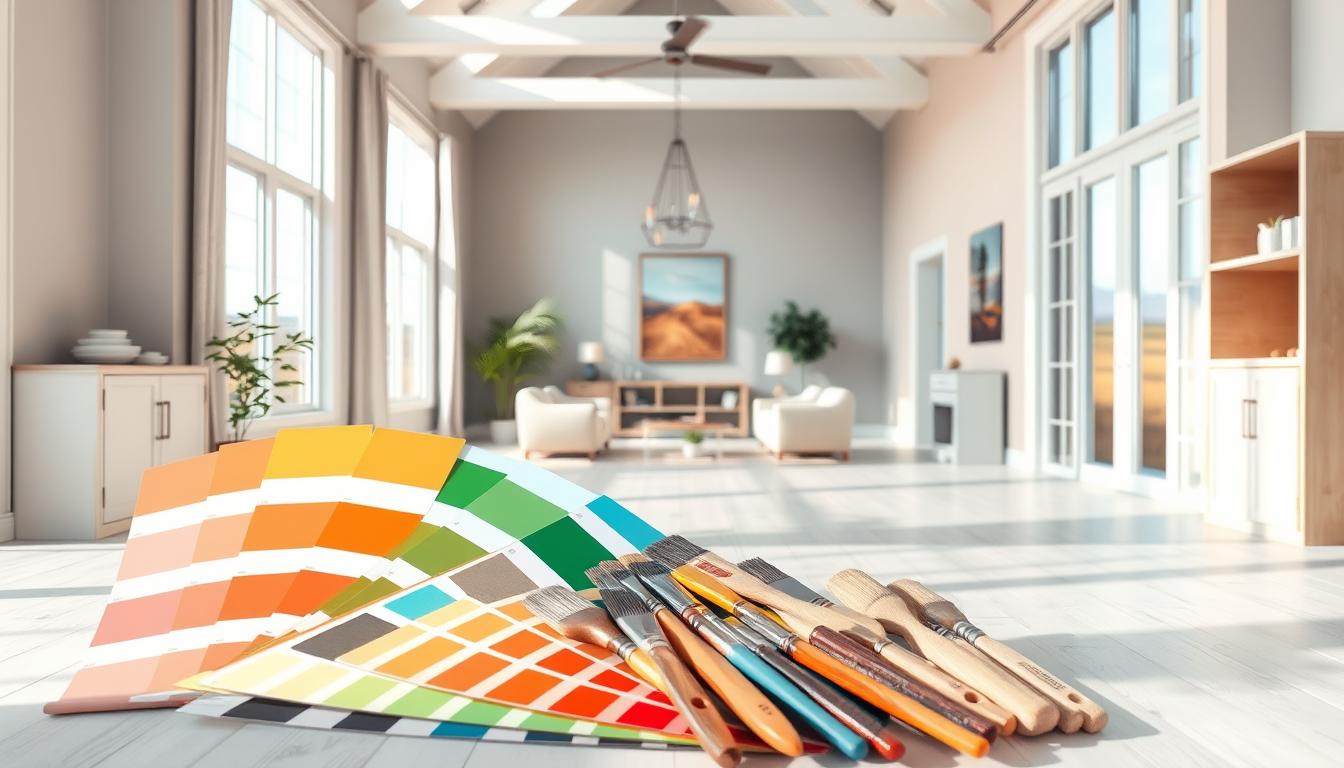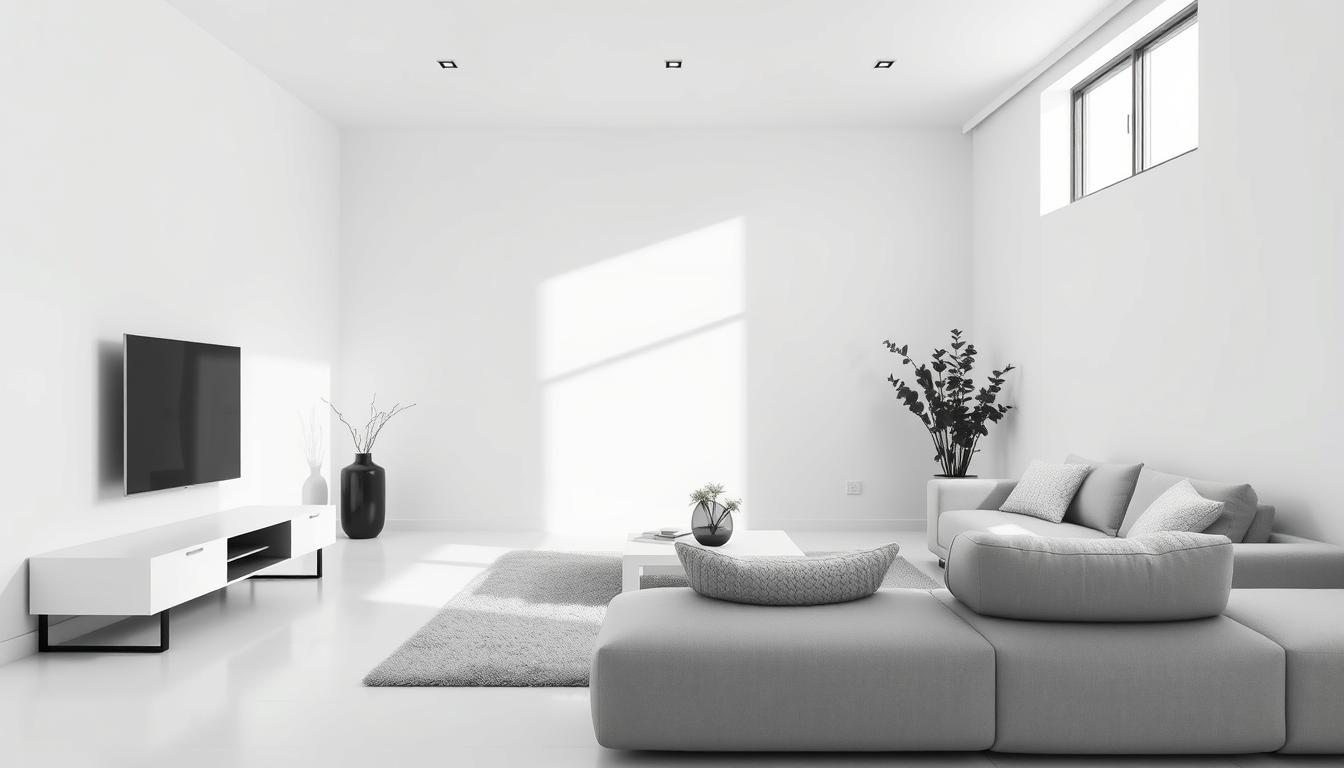Did you know the global market for home interior design software is growing fast? This growth is because homeowners and designers want better ways to plan living spaces.
Technology is changing how we design interior spaces. The right design tools can make a big difference. They help create spaces that are both useful and look great.
We’ll help you find the best home interior design software for your needs. This way, you can make your design ideas come to life.
Key Takeaways
- Understanding the importance of home interior design software in modern design.
- Identifying the key features to look for in best home interior design tools.
- Exploring the benefits of using design software for homeowners and designers.
- Learning how to choose the right software for your specific design needs.
- Discovering the top home interior design software options available today.
Why Use Home Interior Design Software?
With top-rated interior design software, making your dream home a reality is easier than ever. This software is key for homeowners and interior designers alike. It lets you try out different designs, layouts, and styles without making any real changes.
Benefits for Homeowners
User-friendly home design software lets homeowners see how designs will look in their space. This helps in making smart choices for renovations or decorations, avoiding expensive errors. It also lets you play with various styles and layouts, ensuring your vision comes to life.
Benefits for Interior Designers
Interior designers use this software to show clients detailed, interactive 3D models of their designs. This makes clients happier and more understanding, as they can interact with the design before it’s done. It also makes talking about the project easier, cutting down on changes and ensuring the final product is what the client wants.
Streamlining the Design Process
Home interior design software makes the design process smoother. It handles tasks like measuring and scaling, freeing up designers to focus on creativity. It also helps everyone involved in the project stay on the same page, leading to quicker and cheaper projects.
By using user-friendly home design software, both homeowners and designers can reach their design goals faster. Whether it’s a small update or a full makeover, this software is a game-changer. It makes the design process more fun, accessible, and successful.
Key Features to Look For
Finding the right home interior design software is key for a smooth design process. Look for features that make your experience better and improve your designs. Professional home renovation software and easy-to-use interior design programs have important aspects to consider.
User-Friendly Interface
A good user interface is essential. It lets you easily use the software, find tools, and focus on your design. A simple interface saves time and makes designing fun.
Key characteristics of a user-friendly interface include:
- Clear and concise menus
- Easy access to frequently used tools
- A well-organized workspace
3D Visualization Options
Being able to see your designs in 3D is a big plus. 3D visualization lets you see your ideas come to life. This makes it easier to spot problems and make changes.
Benefits of 3D visualization include:
- Enhanced understanding of spatial relationships
- Improved client presentations
- Better design decision-making
Customization Tools
Customization tools are crucial for making your designs unique. They let you change materials, colors, and furniture to fit your style. This way, you can create a design that’s truly yours.
Examples of valuable customization tools include:
| Tool | Description | Benefit |
|---|---|---|
| Material Editor | Allows users to adjust material properties | More realistic designs |
| Color Palette | Offers a range of colors to choose from | Enhanced design flexibility |
| Furniture Library | Provides a variety of furniture models | Increased design accuracy |
Top Home Interior Design Software Options
Software is key in home interior design, making your ideas real. With many choices, picking the right one can be hard. We’ll look at top software, focusing on their special features and benefits.
SketchUp
SketchUp is loved for its easy use and strong features. It’s a hit with both homeowners and pros. Its simple interface lets users make detailed 3D models easily.
Key Features:
- User-friendly interface
- Extensive library of models and textures
- Robust 3D modeling capabilities
AutoCAD LT
AutoCAD LT is top-notch for detailed designs. It’s perfect for those needing advanced drafting and documentation.
Key Features:
- Advanced drafting tools
- Precise 2D and 3D design capabilities
- Streamlined documentation process
RoomSketcher
RoomSketcher has a simple interface and strong features for floor plans and 3D designs. It’s great for homeowners wanting to see their design ideas come to life.
Key Features:
- Easy-to-use floor plan tool
- High-quality 3D rendering
- Customization options
Here’s a summary table to compare these software options:
| Software | Ease of Use | 3D Capabilities | Professional Features |
|---|---|---|---|
| SketchUp | High | Robust | Yes |
| AutoCAD LT | Medium | Advanced | Yes |
| RoomSketcher | High | High-quality | No |
When choosing home interior design software, think about your needs and skill level. Whether you’re a homeowner or a pro, there’s a tool for your design goals.
Comparing Pricing Models
Many interior design software packages have different pricing options. Each has its own advantages and disadvantages. It’s important to understand these models to find the right fit for your budget and design needs.
One-Time Purchase vs. Subscription
The choice between buying once or subscribing is a big decision. A one-time purchase lets you own the software forever. But, it might not include future updates or support.
A subscription-based model gives you access to new versions, support, and sometimes extra services. But, you’ll need to keep paying.
For those with simple projects, buying once might save money. But, if you work on many projects or need the latest features, subscribing could be better.
Free Trials and Free Versions
Many software providers offer free trials or free versions. Free trials let you try the full software for a short time. Free versions have fewer features but are free.
These options help you see if the software works for you before buying or subscribing.
Value for Money Analysis
Doing a value for money analysis means looking at what you get for the price. Think about how much time you save, the quality of your designs, and any extra perks.
For example, a pricier software might have advanced 3D or augmented reality tools. These can really improve your work or presentations, making it worth the cost.
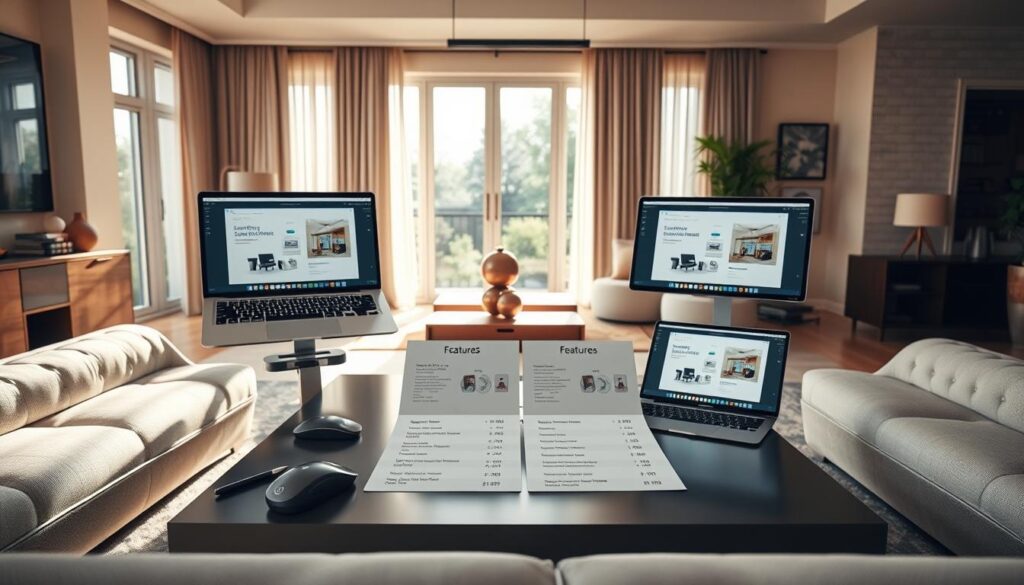
By comparing prices and thinking about your needs, you can find the best software for your money.
Integration with Other Tools
Home interior design software that works well with other tools can streamline your design process. This makes it more efficient and productive. It’s important to look at how well these software features work with other apps and tools.
Compatibility with Real Estate Software
For those in real estate, it’s key for home interior design software to work with real estate tools. This lets for seamless data transfer between systems. It cuts down on manual entry and errors.
It helps real estate agents and designers work better together. They can offer clients a more complete service.
Integration with Project Management Tools
Working with project management tools is also crucial. Home interior design software that links with these tools helps users manage projects better. It makes it easier to assign tasks, track progress, and work as a team.
This ensures projects are done on time and within budget.
Syncing with Mobile Devices
In today’s world, being able to sync with mobile devices is a big plus. This lets users access designs anywhere. It’s great for working with clients, sharing ideas, and making changes quickly.
Whether you’re a designer or a homeowner, having your designs on your phone improves your workflow.
Looking at these integration points helps us pick software that meets our design needs. It also boosts our productivity and teamwork.
Tips for Choosing the Right Software
Choosing the best home interior design tools is a big decision. You need to think about several important factors. This will help you pick the right software for your needs.
Assessing Your Design Needs
First, figure out what you need from your design software. Are you redoing one room or the whole house? Do you want features like 3D views or augmented reality? Knowing what you need will help you find the right software.
Think about these things when figuring out your design needs:
- The scope of your project (single room vs. entire house)
- The level of detail you require (2D vs. 3D visualization)
- Any specific features you need (augmented reality, collaboration tools)
Considering Skill Level
Your skill level with design software is also key. If you’re new, look for software that’s easy to learn. Many tools are designed for all skill levels, with tutorials and simple interfaces.
Ask yourself these questions about your skill level:
- How comfortable am I with design software?
- Do I need advanced features, or will basic tools suffice?
- Am I looking for software that can grow with my skills?
Reading User Reviews
User reviews are very helpful. They show what each software is good at and what it lacks. Look for reviews from people with similar needs and skills to yours.
“I’ve used several interior design software programs, but RoomSketcher stands out for its ease of use and high-quality renderings.” – Emily R., Homeowner
| Software | User-Friendly Interface | 3D Visualization | Collaboration Tools |
|---|---|---|---|
| SketchUp | Yes | Yes | Limited |
| AutoCAD LT | No | Yes | Yes |
| RoomSketcher | Yes | Yes | Limited |
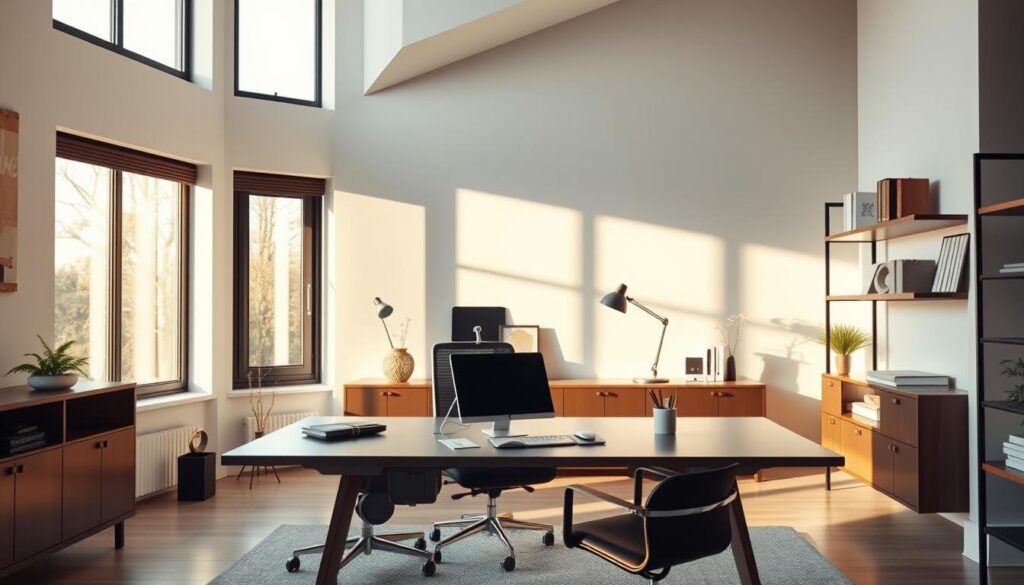
By carefully thinking about your design needs, your skill level, and reading user reviews, you can make a smart choice. This will help you find the best home interior design software for you.
Exploring Advanced Features
When we look into home interior design software, we find special features that make top tools stand out. These features improve how we use the software and make designing more fun and detailed.
Augmented Reality Capabilities
Augmented reality (AR) capabilities are a big deal in home design software. They let users see their designs in real life. This makes it easier to decide and tweak designs before buying or starting a project.
Collaboration Tools for Teams
Collaboration tools are a big help for teams. They let everyone work together, share ideas, and see changes as they happen. This makes designing faster, cuts down on mistakes, and keeps everyone in sync.
- Real-time commenting and feedback
- Task assignment and tracking
- Version control and history
Access to Professional Resources
Top interior design software gives you access to professional resources. You get libraries of furniture and materials, design ideas, and expert tips. These help you keep up with new trends and improve your designs.
Some software also connects with other design and project tools. This opens up even more resources for users.
Getting Started with Home Interior Design Software
The first step in transforming your space is learning how to use user-friendly home design software. This software is designed to make the design process easy, even for beginners.
To start, you need to set up your profile in the software. This is important because it lets you save and access your projects from any device.
Setting Up Your Profile
Setting up your profile involves creating an account with your email and password. Some software lets you log in through social media or other accounts too.
- Provide basic information like your name and email address.
- Create a password and verify your account through an email confirmation link.
- Some software may ask for more details to customize your experience.
Importing Existing Plans
If you have existing floor plans or designs, you can import them into the software. This is great if you’re continuing a project from somewhere else.
The software supports many file formats, making it easy to transfer your work. Common formats include:
- Image files (JPEG, PNG)
- PDF documents
- CAD files (for more advanced designs)
To import a file, go to the ‘Import’ or ‘Upload’ section in the software and follow the instructions.
Creating a 3D Floor Plan
Creating a 3D floor plan is a key step in the design process. It lets you see your space in a realistic way.
To create a 3D floor plan, follow these steps:
- Start by selecting the ‘New Project’ option in the software.
- Choose the dimensions of your space or import an existing floor plan.
- Use the drag-and-drop tools to add walls, windows, doors, and other features.
- Customize your space by adding furniture, fixtures, and decor.
By following these steps, you can start using home interior design software and create your dream space.
Conclusion: Finding Your Ideal Home Design Software
Choosing the right home interior design software is key. It can change how you design your space. Whether you’re designing your home or working as an interior designer, the right software can make your work easier and more creative.
Key Takeaways
We talked about how important it is to have software that’s easy to use. Features like 3D views and customization tools are crucial. Knowing what you need and your skill level helps you pick the best software for your projects.
Next Steps
Now you know what to look for in software. Try out different options and see what they offer. Use free trials and read reviews to find the perfect software for you.
Empowering Your Design Journey
The right software can make your design dreams come true. Keep trying out different programs to find the one that fits your style. This will help you create spaces that reflect your taste.

